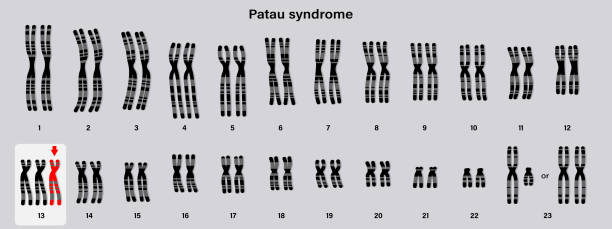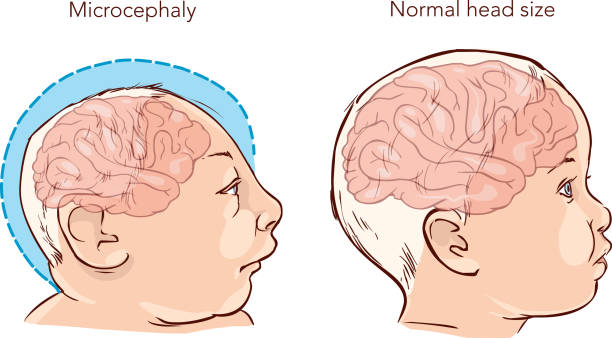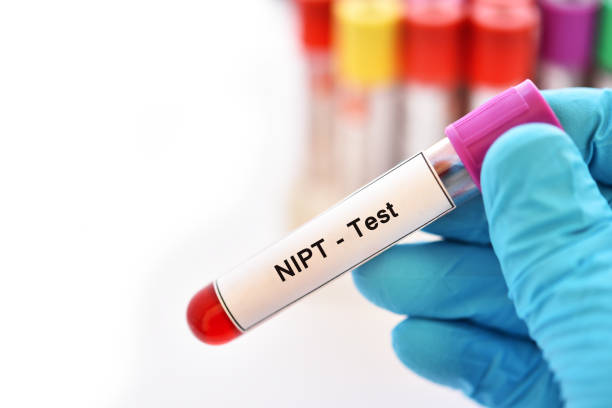Parents, have you heard of the condition Patau Syndrome? Well, if you haven’t, read on and learn how this can affect your baby’s life.
Miscarriages and stillbirths are caused by chromosomal abnormalities. Disorders, such as Down syndrome and other developmental delays or health problems, can have serious consequences.
Individuals with Patau syndrome have three copies of each chromosome instead of the typical two.
The problem may have a variety of effects on the baby’s development. To find out more about the variables that might impact this condition’s life expectancy, keep reading.
What Is Patau Syndrome
The presence of an extra copy of chromosome 13 in part or all of the body’s cells results in Patau’s syndrome, a serious rare genetic condition.
The genes you inherit from your parents are carried by 23 pairs of chromosomes that are typically found in each cell.
But chromosome 13 is present in three rather than two copies in infants with Patau’s syndrome.
This gravely impairs the course of normal development and frequently leads to miscarriage, stillbirth, or the infant passing away soon after birth.
Low birth weight and sluggish womb growth are only two of the significant health issues that Patau syndrome babies experience.
Trisomy 13

Image source: iStock
Another name for Patau Syndrome is Trisomy 13. This condition affects newborns who have three copies of the genetic material on the thirteenth chromosome. While the thirteenth chromosome contains two copies of genetic material in healthy newborns. The problem may have a variety of effects on the baby’s development.
About 1 in every 5,000 babies is affected by Patau’s syndrome. The age of the mother increases the likelihood of having a baby with the condition.
What Causes Trisomy 13
Patau syndrome develops accidentally and is not brought on by the parents’ actions. The majority of cases of the syndrome are not inherited and do not run in families.
When the sperm and egg join and the baby begin to develop, they happen at random during conception.
When cells divide incorrectly, chromosome 13 is produced in excess or partially, which has a negative impact on the unborn child’s ability to develop normally in the womb.
Three Variations of Trisomy 13
There are three variations of this condition, and each of these variations affects the average life expectancy for people with trisomy 13.
Full trisomy
A baby with this syndrome has an extra copy of chromosome 13 in every cell of their body.
Partial trisomy
Patients with this disorder only have an additional portion of chromosome 13 connected to another chromosome in the cells, not a full extra copy.
Mosaic
People with this condition have a whole additional copy of chromosome 13, yet part of the body’s cells do not contain it.
Features of Patau Syndrome
Numerous health issues can affect babies with Patau syndrome.
Eight out of ten will be born with significant heart problems since their growth in the womb is frequently constrained, resulting in low birth weight.
The brain frequently does not split in half. Holoprosencephaly is the medical term for this.
When this occurs, it may damage the features of the face and result in problems like:
- a cleft lip or palate
- very tiny eye or eyes (microphthalmia)
- loss of one or both eyes (anophthalmia)
- a closer separation of the eyes (hypotelorism)
- issues with the nasal passageways’ development

Image source: iStock
Other facial and cranial anomalies include:
- Head size that is smaller than usual (microcephaly)
- The absence of skin on the scalp (cutis aplasia)
- hearing loss and ear deformities
- swollen, crimson birthmarks (capillary haemangiomas)
Patau’s syndrome can potentially result in additional issues like:
- an exomphalos or omphalocele, a defect in the abdominal wall where the abdomen does not fully form in the womb, leaving the intestines outside the body and only protected by a membrane.
- kidney cysts that are abnormal
- in boys, an unusually tiny penis
- a widened clitoris in females
Additionally, there could be anomalies with the hands and feet, such as polydactyly, which is the presence of extra fingers or toes, and rocker-bottom feet, which have rounded bottoms.
Can Patau Syndrome Be Detected in Pregnancy?
Yes, Trisomy 13 or Patau Syndrome can be detected prenatally, through chorionic villus sampling or amniocentesis. There is also a common feature among Trisomy 13 babies that was observed through ultrasound is the thickened area at the back of the baby’s neck, referred to as the nuchal translucency.
NIPT Test

Image source: iStock
Noninvasive prenatal tests or NIPT is provided between 10 and 14 weeks of pregnancy. Prenatal tests such as maternal blood screens, foetal ultrasounds, chorionic villus sampling, and amniocentesis are frequently used to identify Patau syndrome.
If Patau syndrome is not identified during pregnancy and the infant is born, the symptoms are immediately visible. Genetic testing is necessary to establish the correct diagnosis because Patau syndrome might be confused with Edwards syndrome.
To check for brain, heart, and renal problems, imaging examinations like computed tomography (CT) or magnetic resonance imaging (MRI) should be performed.
Given the high prevalence of heart problems linked to Patau syndrome, an echocardiogram (ultrasound of the heart) should be performed.
Trisomy 13 Life Expectancy
Even though the illness is extremely uncommon, some babies are nonetheless born with it. Heart problems are among the severe mental and physical impairments that can result from the illness.
Many infants with Patau syndrome have stillbirths or pass away during the first few days of life. If there are no acute health issues that could endanger the baby’s life, it is difficult to estimate its lifespan.
- Within the first week after birth, around 50% of newborns pass away.
- 90% pass away within a year.
- Only 5–10% of people are able to survive past a year.
Treatment for Patau Syndrome
The primary method of treating Patau syndrome is by addressing the distinct physical problems that every child is born with. Many newborns struggle to survive their first few days or weeks because of serious brain disorders or intricate cardiac issues.
Repairing cardiac problems or cleft lip and cleft palate may need surgery. Individuals with Patau syndrome can achieve their full developmental potential with the aid of physical, occupational, and speech therapy.
Can Patau Syndrome Be Prevented?
Patau Syndrome is a condition that can be genetic or occurs randomly during conception. According to Children’s Hospital of Philadelphia, there is no scientific evidence that points to anything that a parent could have done to cause Trisomy 13. Unfortunately, they also can not do anything to prevent it from happening to their child.
Coping with Trisomy 13
If your baby has already received a Patau syndrome diagnosis, your healthcare provider will go over your options with you. While some parents choose to abort the pregnancy, others choose aggressive intervention. Others will carry on with the pregnancy and continue to take care of the child.
Even though the child’s chances of survival are so slim, some parents nevertheless opt to try intensive care to extend the child’s life. Because these decisions are so deeply personal, you, your partner, and your healthcare practitioner must make them.

Image Source: iStock
Here at theAsianparent Singapore, it’s important for us to give information that is correct, significant, and timely. But this doesn’t serve as an alternative for medical advice or medical treatment. theAsianparent Singapore is not responsible for those that would choose to drink medicines based on information from our website. If you have any doubts, we recommend consulting your doctor for clearer information.